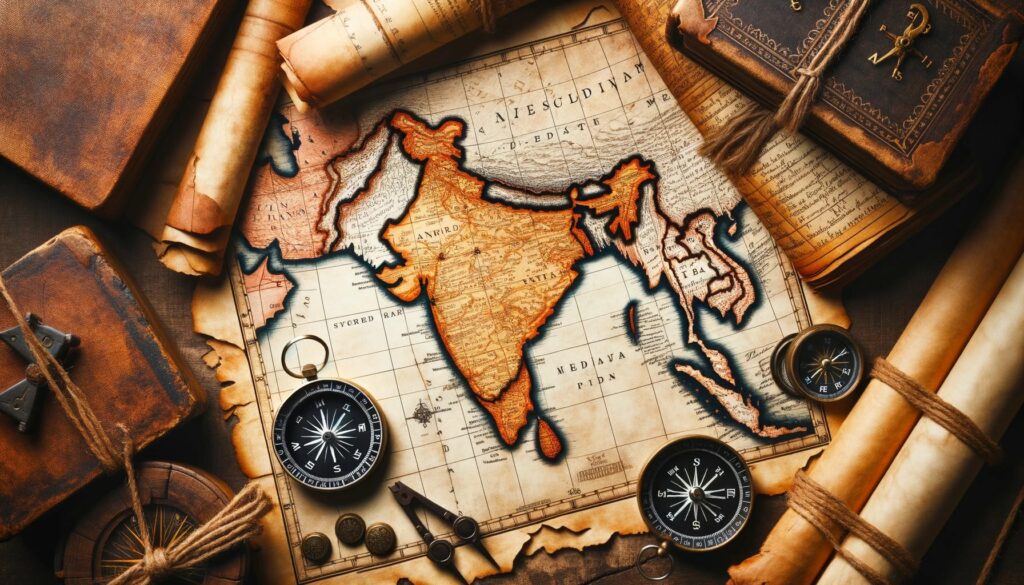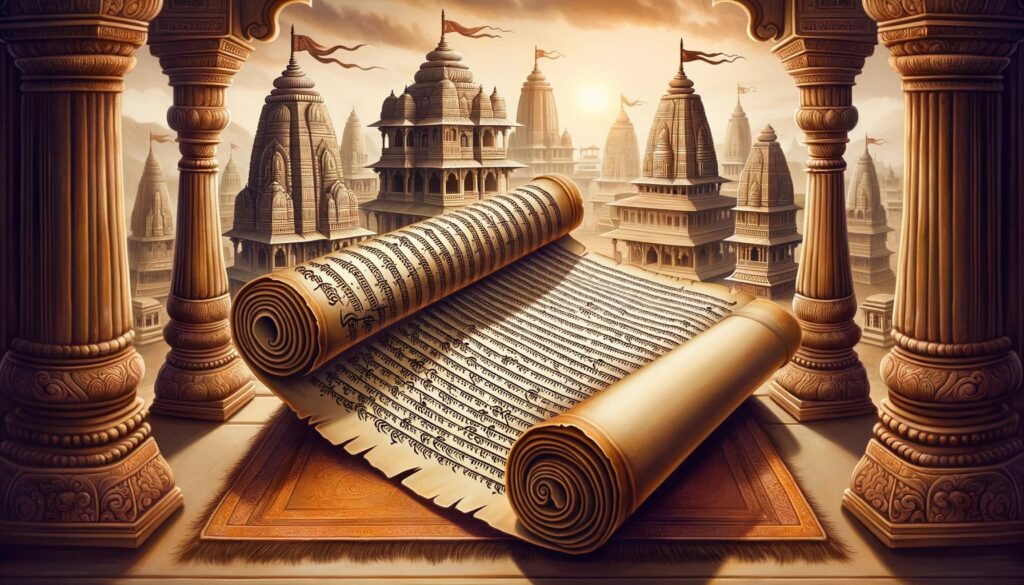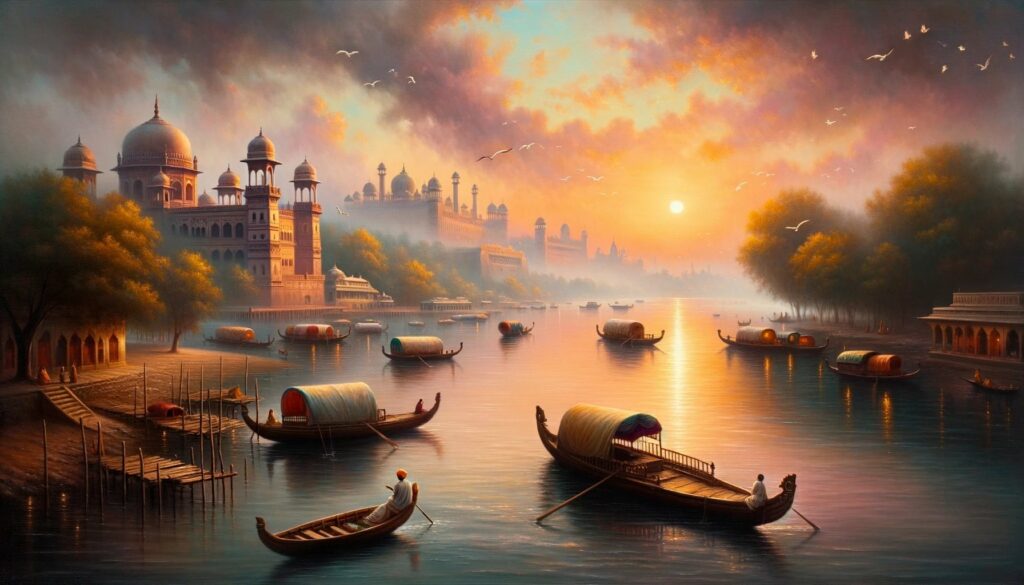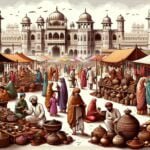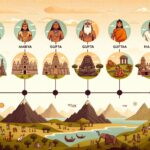Step back in time and embark on a riveting journey through India’s ancient past as we delve into the intriguing question: What is the oldest name of India? As a seasoned historian with a deep passion for uncovering the buried secrets of bygone civilizations, I invite you to join me in unraveling the enigma behind India’s earliest identity. With meticulous research and a keen eye for historical nuances, we will uncover the origins and significance of India’s oldest name, offering a captivating narrative that transports you to a time when the subcontinent was a tapestry of ancient cultures and flourishing civilizations. Get ready to be captivated by the rich heritage of India as we delve into the secrets of its ancient name.
What is the oldest name of India?
India, a country known for its captivating ancient culture and rich heritage, has a history that dates back thousands of years. Many people wonder what the oldest name of India is and how it has evolved over time. In this article, we will delve into the fascinating origins of India’s ancient name and explore its significance throughout history.
Meluha: The Oldest Name Associated with India
When exploring the oldest name of India, we must turn our gaze towards the ancient Mesopotamian texts of the third millennium BCE. These texts mention a place called “Meluha,” which is believed to be associated with the Indian subcontinent. Although it is not a name commonly used today, it holds great significance as the oldest known name connected to India.
Jambudvipa: An Ancient Name for India
Before the name “Bharata” came into prominence, India was referred to as “Jambudvipa” in ancient scriptures. Derived from the Sanskrit term “berry island,” this name reflected the geographical features and abundance of berries found in the region. Interestingly, Jambudvipa was historically used as a name for India in many Southeast Asian countries, emphasizing the widespread influence of Indian culture and ideas across the region.
The Evolution of India’s Names
As India’s history unfolded, various names became associated with the land we now know as India. The name “India” itself derives from the Sanskrit word “Sindhu,” which referred to the Indus River and its surrounding region. The Indus Valley Civilization, one of the world’s oldest and most influential civilizations, thrived along the banks of the Indus River, giving rise to the name “India.”
Furthermore, the words “Hindu” and “Hind” also find their roots in the Sanskrit term “Sindhu.” Initially used to refer to the Indus River and its region, these terms gradually evolved to encompass the broader Indian subcontinent. Even the Achaemenid emperor Darius I recognized the significance of this region and used the Achaemenid equivalent of “Sindhu,” which was “Hindush,” to refer to the lower Indus basin.
The Contextual Usage of Names
In modern times, the Republic of India has multiple names, including India, Bharat, and Hindustan. The usage of these names depends on the context and the language of conversation. “India” is the internationally recognized name, while “Bharat” holds cultural and historical significance as it is derived from the mythological figure Bharata, an ancestor of the Pandavas in the Indian epic Mahabharata. “Hindustan,” on the other hand, has its roots in Persian, where “Hind” denotes the Indus region.
Unraveling the Mysteries of India’s Ancient Names
India’s ancient origins are filled with captivating tales and fascinating historical nuances. The names associated with this ancient land have evolved over time, influenced by various cultures and languages. From Meluha to Jambudvipa, from Sindhu to India, each name reflects a different facet of India’s rich heritage.
So, the next time someone ponders the oldest name of India, you can enlighten them with this knowledge. India’s ancient past is a tapestry woven with the threads of countless civilizations and cultures, making it a treasure trove for historians and enthusiasts alike.
The ancient Indian civilization is a mesmerizing journey through time. With its rich history and cultural diversity, it is a treasure trove waiting to be explored. From the advanced cities of the Indus Valley to the spiritual teachings of the Vedas, this civilization has left an indelible mark on the world. Delve into the mysteries of ancient India and uncover its secrets by clicking on this link. Let the allure of the past captivate your senses as you embark on a voyage of discovery.
Discussion of the significance and meaning behind the ancient name
India, a land with a captivating past, holds the key to unraveling its oldest name. The roots of India’s ancient name lie in the word “Sindhu,” which referred to the mighty Indus River. The term “Sindhu” finds mention in the Rig-Veda, a remarkable Indo-European text composed between 1700-1100 BC. This ancient name is a doorway to India’s rich history and its profound connections to the development of civilizations.
The word “India” itself has a fascinating etymology, reflecting its deep-rooted past. As the residents of India began using the term “Hindu” to distinguish themselves from the Turks in the 16th century, it became more commonly associated with the land we now know as India. However, the ancient name “Sindhu” still carries tremendous significance in understanding India’s ancient origins.
Beyond the name “India,” another ancient name designated for the country is “Bharata.” It is interesting to note that the Indian constitution employs this name to refer to the country. “Bharata” holds its roots in the Mahabharata, one of the two major Sanskrit epic poems of ancient India. This epic provides invaluable insights into the development of Hinduism between 400 BCE and 400 CE, shedding light on the ancient heritage of the land.
Hinduism itself holds a central place in India’s historical narrative. As one of the world’s major religions, it originated on the Indian subcontinent and encompasses various systems of philosophy, belief, and ritual. Exploring the origins of Hinduism provides a window into India’s ancient cultural and spiritual tapestry and the diverse range of influences it has had on the development of civilization.
To delve deeper into the significance and meaning behind India’s ancient name, let’s consider an analogy. Just as a tree’s roots anchor it firmly in the ground, India’s ancient name connects its present identity to its historical origins. The exploration of the oldest name of India is like unearthing ancient treasures, providing a profound understanding of the country’s remarkable heritage.
In conclusion, India’s ancient name serves as a gateway to its deep-rooted past. From the word “Sindhu” mentioned in ancient texts to the names “India” and “Bharata” that carry significant cultural and historical connotations, each name weaves a fascinating tale of India’s rich history. By connecting with these ancient names, we gain a greater understanding of the significance and meaning behind India’s origins, cultural diversity, and its enduring impact on the world.
Explanation of How the Ancient Name has Evolved Over Time
Have you ever wondered about the origins of India’s ancient name? The story behind it is a fascinating journey through time, taking us back to the earliest civilizations and the evolution of language. In this article, we will delve into the deep-rooted heritage of India and explore how its ancient name has transformed over the centuries.
The Sanskrit Connection: From Sindhu to India
To truly understand the oldest name of India, we must go back to the ancient Sanskrit texts. The name ‘India’ originated from the Sanskrit word ‘Sindhu,’ which translates to ‘river’ or specifically, the mighty Indus River. The ancient inhabitants of the Indus Valley, known as the Harappans, referred to their land as ‘Sindhu’ due to its close proximity to this powerful waterway.
The term ‘Sindhu’ gradually evolved over time. As cultures and languages intermingled, neighboring civilizations began to refer to the land and its people differently. The Persians, for instance, pronounced ‘S’ as ‘H,’ leading to the name ‘Hindos.’ Later, the Greeks altered it further to ‘Indos.’ This is how the name ‘India’ gained prominence and was adopted into English through various linguistic influences.
Unearthing Ancient Texts: Tracing the Evolving Name
The history of names is an intricate web that dates back to ancient times, and it is impossible to determine the exact beginning of this story. However, we can trace the transformation of India’s ancient name through various historical texts. One such example is the Rig-Veda, an Indo-European text composed between 1700-1100 BC. In this sacred scripture, the term ‘Sindhu’ finds mention, cementing its significance in India’s ancient origins.
Interestingly, another ancient name for India is ‘Bharata,’ which holds its roots in the Mahabharata, a Sanskrit epic that provides insights into the development of Hinduism. You see, Hinduism holds a central place in India’s historical narrative and originated on the Indian subcontinent. By exploring the origins of Hinduism, we gain a deeper understanding of India’s ancient cultural and spiritual tapestry.
India’s Historical Tapestry: Connecting the Present to the Past
India’s ancient names act as a gateway to its deep-rooted past, connecting its present identity to its historical origins. By unearthing the oldest name of India, we embark on a journey that unravels the country’s heritage and its profound impact on the world. It allows us to comprehend the rich tapestry of traditions and beliefs that have evolved over centuries, shaping the nation we see today.
In the grand tapestry of human evolution, India’s ancient name holds a significant place. The process of human evolution is a lengthy one, with physical and genetic changes occurring over time. As we evolved, so did our languages and civilizations, leading to the transformation of ancient names. It is through understanding these changes and evolution that we gain deeper insights into our shared history as a species.
Conclusion
The ancient name of India has evolved over time, reflecting the changing civilizations, languages, and cultures that influenced and shaped its identity. From the Sanskrit word ‘Sindhu’ to the internationally recognized ‘India,’ the journey of this name has witnessed centuries of historical developments. By understanding the origins and significance of India’s ancient names, we gain a profound understanding of the country’s heritage and its impact on the world.
References
- National Geographic Society. (n.d.). Human Evolution. Retrieved January 18, 2022, from [link]
- Ancient History Encyclopedia. (2019, May 15). The History of Ancient India. Retrieved January 18, 2022, from [link]
FAQ
Question 1
What is the origin of the name “India”?
Answer 1
The name “India” has its origins in the word “Sindhu,” which referred to the Indus River. The term “Sindhu” is mentioned in the Rig-Veda, one of the oldest extant Indo-European texts composed between 1700-1100 BC.
Question 2
When did the term “Hindu” start being used to refer to the residents of India?
Answer 2
Residents of India began employing the term “Hindu” in the 16th century to distinguish themselves from the Turks.
Question 3
What other names have been used to refer to India?
Answer 3
Apart from “India,” the name ‘India’ originated from the Sanskrit word ‘Sindhu’ and was referred to as ‘Hindos’ or ‘Indos’ by neighboring cultures. Additionally, the Indian constitution designates the country as “Bharata.”
Question 4
What texts provide information about the development of Hinduism in ancient India?
Answer 4
The Mahabharata, one of the two major Sanskrit epic poems of ancient India, offers information on the development of Hinduism between 400 BCE and 400 CE.
Question 5
What is the significance of India’s ancient names?
Answer 5
India’s ancient names hold significance as they reflect the historical and cultural roots of the country. The name “India” has a rich and fascinating etymology that can be traced back to ancient times, showcasing the deep-rooted heritage of the nation.

